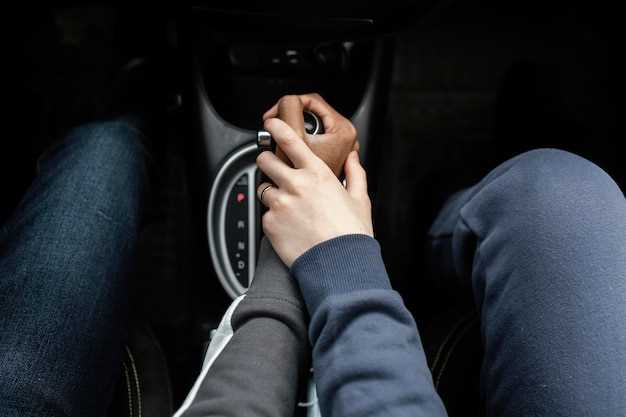

Shifting gears is one of the most fundamental aspects of driving, especially for enthusiasts who crave a more engaging experience behind the wheel. One effective way to enhance your vehicle’s performance is by installing a short shifter. This modification not only can significantly improve your shifting speed but also provides a more tactile feel during gear changes. If you’re looking for ways to make your driving experience faster and more enjoyable, a short shifter could be the upgrade you’ve been waiting for.
Short shifters replace the factory equipment with a shorter linkage, reducing the distance the shifter needs to travel between gears. This means that shifts are more immediate, allowing drivers to get back on the power quicker. With a properly installed short shifter, you can experience a faster and more responsive driving experience that transforms your car’s performance. Beyond just speed, the precision and reduced throw can enhance your connection to the vehicle, making every drive more exhilarating.
In this guide, we will explore the benefits of a short shifter, discuss how to choose the right model for your vehicle, and provide step-by-step instructions for installation. Whether you are a seasoned mechanic or a first-time modifier, our detailed information will help ensure that your vehicle is upgraded efficiently, leading to an improved driving experience like never before.
Understanding the Benefits of Short Throw Shifters for Faster Shifting

Short throw shifters are designed to reduce the distance the gear lever travels during shifting, offering several advantages for drivers seeking a more responsive experience. One of the primary benefits is the ability to shift gears faster. With a shorter throw, the driver can engage the next gear with minimal movement, significantly improving shift times.
Another important aspect is the enhanced precision that comes with short throw shifters. The design facilitates a more direct connection between the driver and the transmission, resulting in more accurate gear selection. This precision minimizes the risk of mis-shifts, providing confidence, especially during aggressive driving or racing scenarios.
In addition to improved speed and precision, short throw shifters often come with a more ergonomic design. This means that the height and angle of the shifter can be optimized for driver comfort, allowing for a more natural and comfortable hand position. This ergonomic benefit contributes to a more enjoyable driving experience, reducing fatigue during prolonged use.
Moreover, short throw shifters can enhance the overall feel of the vehicle. The reduced throw often leads to a firmer engagement, which many enthusiasts appreciate. This tactile feedback can enhance the driving experience, making it feel sportier and more connected to the road.
Ultimately, upgrading to a short throw shifter can significantly improve a vehicle’s shifting performance. Faster, more precise shifting and better ergonomics combine to create a more dynamic driving experience that resonates with performance-oriented drivers.
Step-by-Step Installation Process for Short Shifters
Upgrading your vehicle with a short shifter can significantly enhance your driving experience by allowing for quicker shifts and a reduced throw. Below is a detailed installation process to help you achieve this modification efficiently.
Step 1: Gather Necessary Tools and Materials
Before starting, ensure you have the required tools including a ratchet set, socket extensions, and a screw driver. Additionally, have your short shifter kit ready, which typically includes the shifter itself and any necessary bushings or hardware.
Step 2: Prepare the Vehicle
Park your vehicle on a flat surface and engage the parking brake. It’s advisable to disconnect the battery to avoid any electrical issues during the installation. Remove the center console to access the shifter assembly.
Step 3: Remove the Stock Shifter
Identify and remove any clips or screws securing the stock shifter in place. Carefully twist and pull the shifter out of its housing to avoid damaging any components. Be mindful of the linkage beneath and ensure it is properly detached.
Step 4: Install the Short Shifter
Position the new short shifter into the shifter housing. Align it correctly with the linkage, ensuring it sits securely. The reduced throw of the short shifter will allow for faster gear changes, making sure not to force it if it doesn’t fit easily.
Step 5: Reattach Components
Once the short shifter is in place, reattach any clips or screws. Ensure everything is fastened securely to prevent any movement during shifting. Double-check all connections, including linkage adjustments, to maintain optimal performance.
Step 6: Reassemble the Center Console
After securing the shifter, put the center console back together. Make sure all parts are aligned correctly and reattach any screws or fasteners that were removed during disassembly.
Step 7: Test the Shifter
Reconnect the battery and start your vehicle. Test the short shifter by going through all gear positions to ensure smooth functionality. The new setup should provide quicker shifting and a more engaging driving experience.
Step 8: Final Adjustments
If necessary, make any adjustments to the linkage if you notice resistance or imprecise shifting. Sometimes, slight modifications can enhance the responsiveness further, leading to an even better driving experience.
By following these steps, you can effectively install a short shifter in your vehicle, allowing for faster shifts and improved performance on the road.
Tuning Your Driving Experience: Adjusting Short Shifter Feel and Feedback

Upgrading to a short shifter can significantly enhance your driving experience by providing quicker and more precise gear shifting. However, to fully reap the benefits of this modification, it’s essential to adjust the feel and feedback of the shifter to meet your preferences.
One of the pivotal aspects to consider is the shifting throw. This refers to the distance the shifter travels when engaging a gear. Short throw shifters are designed to minimize this distance, allowing for faster shifts. Depending on your driving style, you might prefer a minimal throw for rapid racing conditions or a slightly longer throw for better control in everyday driving.
Another important factor is the feedback provided by the shifter. A good short shifter should offer tactile feedback that lets you know when a gear is engaged without unnecessary resistance. You can adjust this feel by experimenting with the shifter assembly and ensuring all components are well-lubricated and properly installed. A smooth engagement can lead to a more satisfying driving experience and make shifting feel more intuitive.
Additionally, consider the shifter knob’s weight and shape. A heavier knob can provide a more substantial feel during shifting, while a lighter one may enhance quickness. The ergonomic design impacts comfort and control, so try different configurations to find what feels right for you. The right combination will allow you to shift faster with precision, significantly improving performance.
Lastly, don’t neglect to fine-tune the connection points to the transmission. Adjusting the linkage can provide an even sportier feel, ensuring that each shift feels direct and responsive. Small modifications can lead to improvements in speed and accuracy, amplifying your enjoyment of the driving experience.







